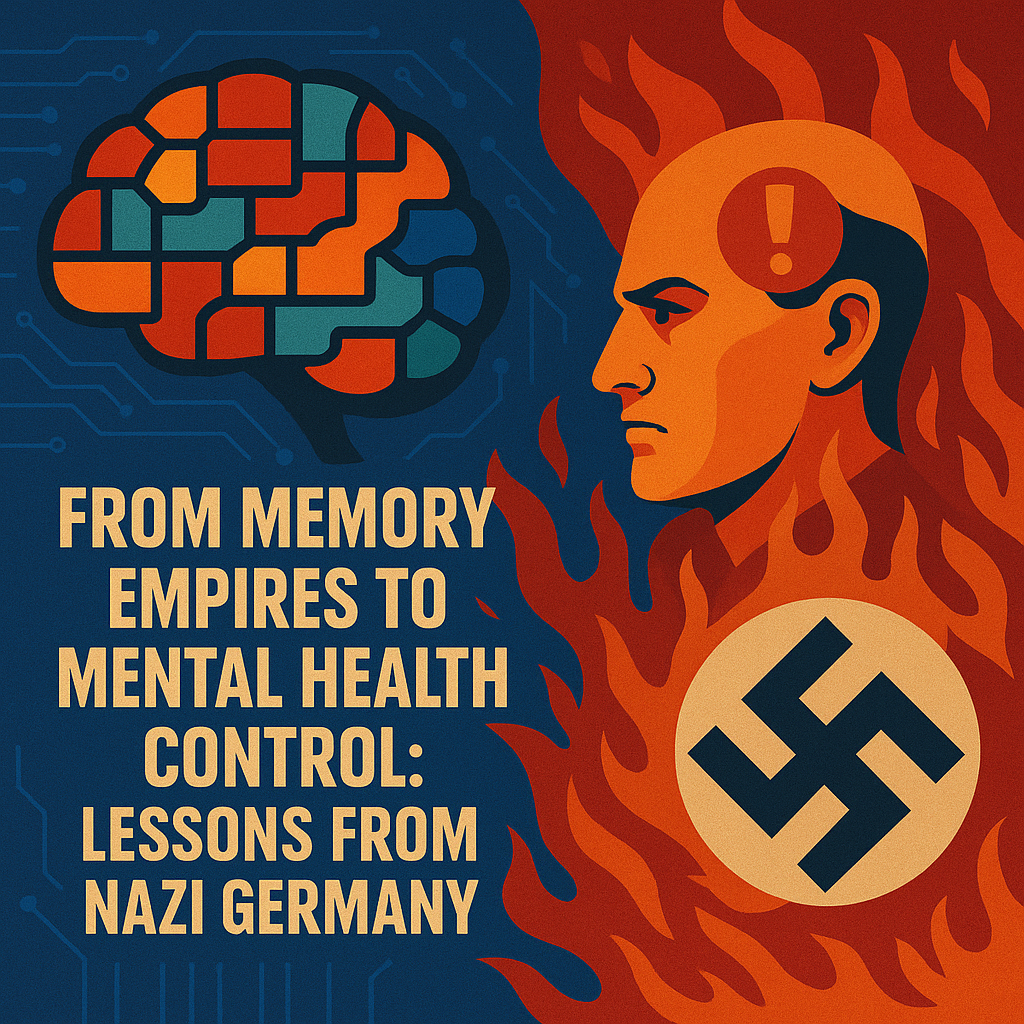“The past is never dead. It’s not even past.” – William Faulkner
This isn’t Nazi Germany. But history urges us to pay attention when rhetoric begins to blur lines between treatment and containment, between safety and social control.
⸻
The Language of Risk and Disorder
The EO opens with a frame familiar to 20th-century authoritarian policies: crime, disorder, and threats to the public good.
• It encourages civil commitment not just for people living on the streets, but for anyone with a diagnosed mental illness deemed a “risk” or unable to care for themselves.
• Federal funding and DOJ support are tied to states adopting “maximally flexible” civil commitment standards — a phrase that effectively means lowering the threshold for detaining people.
This is not unique to America’s present moment. The 1930s in Germany saw similar rhetoric — framed not as punishment, but as “protection” of both society and the individual.
⸻
The Nazi Precedent: The Slippery Language of Care
In Nazi Germany, the early eugenics laws were written as though they were acts of care.
• The 1933 Law for the Prevention of Hereditarily Diseased Offspring justified sterilization of mentally ill individuals as a “medical intervention” for public safety and the health of the nation.
• Propaganda films presented “euthanasia” as compassion — removing suffering from those “unfit” for life.
• Institutions that began as hospitals or asylums became centers of mass killing under Aktion T4, which murdered more than 200,000 disabled and mentally ill people between 1939 and 1945.
This escalation did not happen overnight. It began with civil commitments and centralized control over who was considered “dangerous” or “unfit.”
⸻
Parallels in Tone, Not in Scope
To be clear: the EO does not propose sterilization, euthanasia, or extermination. But its broad and vague language — “pose risks to themselves or the public” — recalls the early mechanisms of control in Nazi Germany:
• Subjectivity: Who defines “risk”? Without strong legal checks, this could mean anything from suicidal ideation to politically inconvenient behavior.
• Centralized Power: The DOJ is directed to “undo precedents or decrees” that have limited forced commitment — echoing how Nazi Germany systematically dismantled legal protections for the vulnerable.
• Framing Mental Illness as Threat: Like Nazi-era rhetoric, the EO blurs the line between healthcare and public safety policing.
⸻
Memory Empires and the Control of Narrative
Why link this to the Empire of Memory? Because controlling how society remembers the past often dictates how power is exercised in the present.
• Peter Thiel’s investments in Palantir, a company built to collect and cross-analyze personal data, suggest a surveillance infrastructure that could align with these policies.
• When data sets, from health records to criminal histories, become part of predictive policing, we risk entering a space where algorithms decide who is a “danger” — and memory itself becomes weaponized.
⸻
The Lesson of History
The most dangerous policies rarely begin as overt oppression. They start with softened language — protection, safety, care.
• Nazi Germany’s euthanasia program was pitched as mercy.
• Today’s EO presents civil commitment as compassion for those unable to care for themselves.
The line between care and control is thinner than we think when the state defines who deserves freedom.
⸻
How to Resist Forgetting
• Remember history’s patterns. Eugenics programs thrived on public apathy and fear.
• Defend due process. Involuntary commitment requires strict legal and medical oversight — loosening these standards invites abuse.
• Build archives of truth. Projects like A Curious Stack’s Empire of Memory exist to remind us that power often rewrites history.
⸻
A Curious Closing Thought
History doesn’t repeat — but it does rhyme. When leaders frame vulnerable populations as dangerous “others,” when memory is selectively archived or erased, we should hear the echo of old regimes whispering in modern language.
The real question is not whether this EO is “the same” as Nazi Germany’s policies — it’s whether we’ve learned enough from history to recognize the early signs of control before they harden into something irreversible.

Leave a Reply